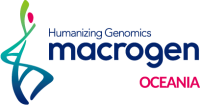How do I set up an account with Macrogen?
As of December 2019, there is a change in operation:
For all NGS projects: Billing/payment/PO is to be made to ‘Macrogen Oceania Pty Ltd’ (ABN 22 619 642 607), all work will be registered under Macrogen Oceania PL.
For Sangers and Oligo work business as usual.
Can I use my colleague’s account for my project?
Yes you may, as long as you are working in the same department and your colleague is OK with it. Please note, all the communications including QC results, data delivery, and the invoice will be sent to your colleague.
We suggest that you create your own account to simplify the process.
How do I pay for your sequencing services?
Once you have received an invoice from us you have 30 days to pay.
Wire transfer is most commonly used, but credit card and cheque payment options are available as well.
Can I make a pre-payment for my project?
Yes, this option is available upon request. Please contact our consultant to make the arrangements.
Where do I send my samples?
For AU clients:
Please send your samples to Macrogen Oceania branch at:
Attn: Ms Olivia Han
Address: Unit 435 14-16 Lexington Drive, Bella Vista, NSW2153 AU
Phone: +61 456 067 598
For NZ clients: Please send your samples to Macrogen Inc., at:
Attn: Ms Jihye Ham
Address: 10F World Meridian Venture Center, #60-24 Gasan-don Geumchun-gu, Seoul 153-781, South Korea
Phone: +82 2 2180 7162
How should I pack my samples?
Samples in tubes:
Place the sealed microcentrifuge tube in a 50 ml disposable screw-cap tube or other suitable container for an additional insulation to minimise any risk of physical damage or samples being rattled during the shipping.
Samples in plate:
Please ensure the seal is secure to avoid any contamination.
Samples in dry ice:
Once again, the sample must be secure and well insulated to avoid any risk of physical damage. Please ensure enough dry ice is being used.
How do I prepare my samples?
DNA Samples
– Prepare DNA sample(s) in commercial buffer or Distilled water at a minimum concentration and volume required (Please check the sample criteria).
– Screw cap tube is recommended or 1.5~2.0ml microcentrifuge tube tightly sealed and parafilm wrapped can be used.
– Please ensure they are clearly labelled.
– If possible, include a brief description of the DNA extraction and/or enrichment protocol used.
– Please pack them with ice packs but they can be delivered in an ambient temperature.
RNA Samples
– Prepare RNA sample(s) in commercial buffer, EtOH or DEPC treated water clearly labelled screw cap tube or 1.5~2.0ml microcentrifuge tube tightly sealed and parafilm wrapped.
– Include a brief description of the RNA extraction and/or enrichment protocol used.
– Dry ice shipping: Please ensure you have plenty of dry ice, 4~5kg of dry ice lasts 24-36hrs.
Please check
Macrogen Sample Packing Guideline (PDF)
Sample QC criteria (Excel)
What is your service workflow?
Once the project is engaged, ie. signed quote, PO and completed order sheet has sent to us, we will check, register the details in LIMS and wait for the sample to arrive either our NSW office (for AU clients) or direct to our lab in Korea.
We will notify you upon the sample receipt and begin sample QC. In most circumstance, library preparation/QC will take place unless sample QC has failed. We will continue working towards sequencing and will communicate during the progress, until the delivery of the result. The invoice will be issued to you via email to which you have 30 days to pay.
What is the turnaround time?
Turnaround time is very project requirement dependant but for NGS work, 4–6 weeks is our usual turnaround time from the time the sample QC has passed. We usually support the project within 4~8 weeks.
Who can I contact?
For any questions, please contact us at info@macrogen.com.au
Who can I ask for a technical support?
Please contact us for any technical enquiries you have.
Depending on the issue, the consultant will refer you to the right person.
Should I use Ice-packs for DNA samples?
Recommended but not essential. This is because DNA samples are stable at ambient temperature—but it is better to keep the samples cooled during the shipping.
Do you support the dry ice shipping as well?
Only for AU clients. If you can send your sample(s) in dry ice to our local office in NSW, we will be responsible from there on. We store your samples in a -80C freezer before we send them to our lab in Seoul, Korea, in dry ice via DHL medical express service. There will be an additional fee for the dry-ice shipping; please talk to us about this option.
What other types of samples do you accept? Can I send tissues or fluids for you to perform the DNA/RNA extractions?
Yes, in most circumstances, but please discuss your specific needs with our consultants.
What is minimum of the sample requirements?
Below is a brief guide only—please discuss your specific samples with our consultants:
DNA/RNA Quality
- DNA
All DNA sample(s) requirement:
– Double strand, non-degraded, and containing no particulate matter
– Purified by column or gel purification protocols
– A260/280 ratio of 1.7 or above
2. RNA
All RNA sample(s) requirement:
– RIN > 7
– rRNA ratio >1.2
For detailed sample requirements including Concentration, Purity, and Volume, please contact our consutant.
3. Illumina/Pacbio platforms (in EB buffer)
| Sample Type | Amount required |
| gDNA (for illumina shotgun library) | 1-2µg |
| gDNA (for illumina Exome library) | 1µg |
| gDNA (for Pacbio library) | 8-12µg |
| gDNA (for Amplicon library) | 1µg |
| small RNA | entire fraction of small RNA purified from >3µg of total RNA |
Should I do QC before sending the samples?
Recommended but not mandatory as we will be doing that at our end too. We will use our QC result to determine the next step of the project.
What QC method do you prefer?
- Quantity of DNA: Done by PicoGreen* method using Victor 3 fluorometry.
Macrogen quantifies the starting genomic material by a fluorescence-based quantification, rather than a UV-spectrometer-based method.
This is because fluorescence-based methods, which employ a double-stranded DNA specific dye, will specifically and accurately quantitate dsDNA even in the presence of many common contaminants. UV-spectrometer methods based on 260 OD readings are prone to overestimating the DNA concentration due to the presence of RNA and other contaminants commonly found in gDNA preparations. - Purity of DNA: Done by NanoDrop instrument.
Absorbance measurements at 260 nm are commonly used to quantify DNA.
Impurities, such as detergents or proteins, are typically revealed by the presence of smeared DNA bands, and values of 1.8–2.0 are considered indicative of relatively pure DNA. - Assessing the condition of the DNA: Done by gel electrophoresis method.
Gel electrophoresis is a powerful means for revealing the condition (including the presence or absence) of DNA in a sample. A ladder or smear below a band of interest may indicate nicking or other damage to DNA. - Size Check of DNA [optional, upon request, charged]
- DNA fragments <1kb : 2100 Bioanalyzer* is used for checking the size. *Macrogen uses DNA 1000 chip and DNA 7500 chip for normal PCR product, high sensitivity chip for very small amounts of DNA fragments such as ChIPed DNA. *http://www.genomics.agilent.com/CollectionSubpage.aspxPageType=Product&SubPageType=ProductData&PageID=1636
- DNA fragments < 150kb: PFGE method is used for a large sized DNA fragments. Please keep in mind that we will proceed with this upon request and you will be charged.
RNA QC Method
Quality & Quantity Check of RNA: 2100 Bioanalyzer is used.
We check total RNA integrity using an Agilent Technologies 2100 Bioanalyzer with an RNA Integrity Number (RIN)*** value greater than or equal to 8. However, contaminant DNA will be removed during mRNA purification. It is very important to use high-quality RNA as the starting material. Use of degraded RNA can result in low yield, over-representation of the 5′ ends of the RNA molecules, or failure of the protocol.
What kits do you recommend for DNA/RNA library preparation?
It depends on what application you need for your project, so please contact our NGS consultant manager.
What platforms/technologies do you have?
- NovaSeq 6000
- HiSeq XTen
- HiSeq 2500/HiSeq 4000
- NextSeq 500 / MiSeq
- PacBio Sequel II / Pacbio Sequel I /PacBio RSII
- Ion PGM
- Ion Proton
- 10x Chromium
- Bionano Saphyr
What is maximum number of samples you can multiplex in a lane of Hiseq?
Normally, up to 24 using a single barcode or up to 384 using dual barcode combinations. However, we recommend that you discuss your specific needs with our consultant.
How do I obtain the data after the project is completed?
Once completed, the data can be transferred via FTP downloads, HDD or Cloud.
What bioinformatics support is available?
Macrogen offers a variety of BI support for your needs. You can have standard, advanced or customised analysis. Please ask our consultant for detailed information.
Whole exome sequencing was performed recently using Agilent sureselect kit, where do I find the interval files?
https://earray.chem.agilent.com/suredesign/search.htm
Once you are registered, please select ‘SureSelect DNA’ under Find Designs and under ‘Agilent Catalog’ select the kits used. NB. Sureslect Human All Exon V6 r2 is replaceable with Sureslect Human All Exon V6.


